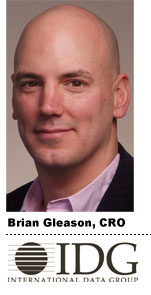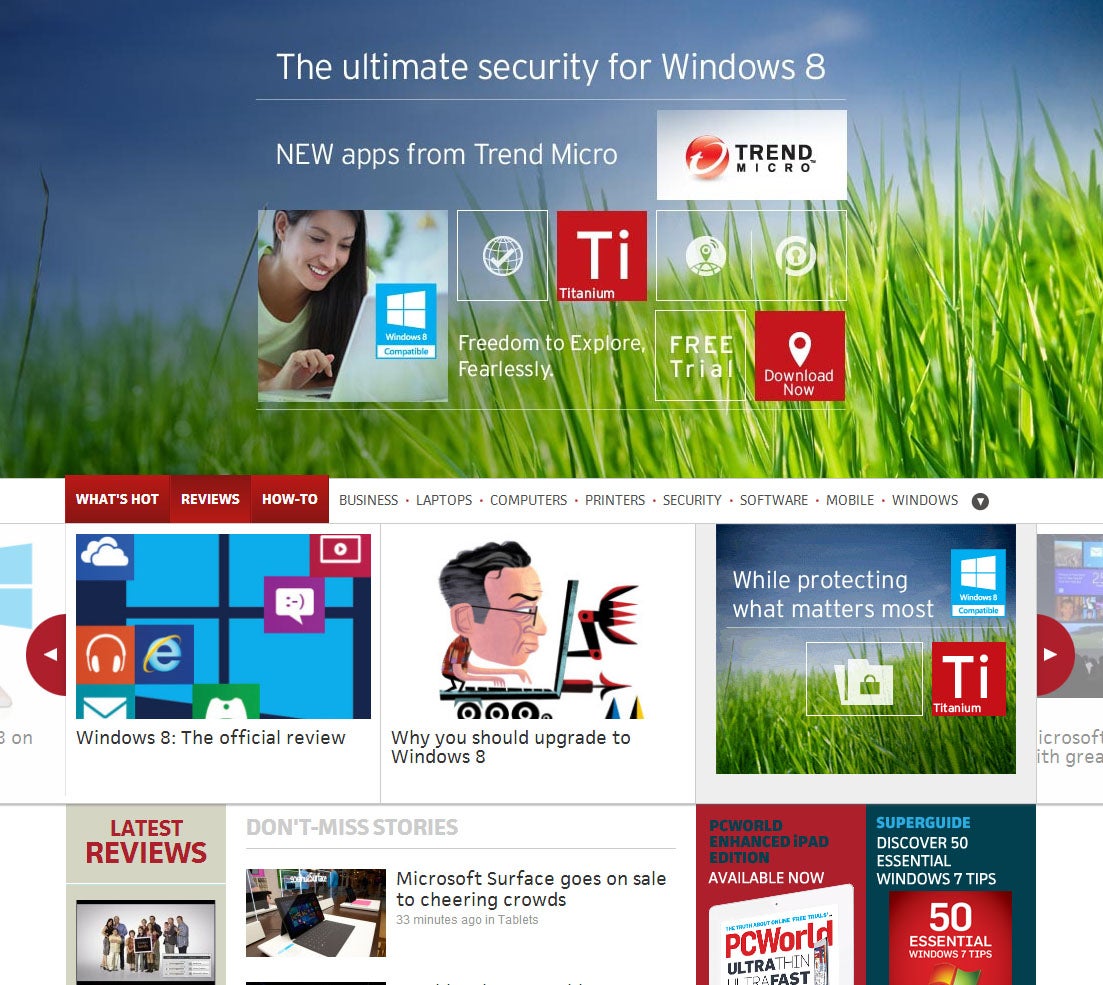 In the two months since tech publisher IDG finished a major redesign of its PCWorld, Macworld and TechHive sites, the company is ready to expand the centerpiece of that effort: the “Homepage Hero” box.
In the two months since tech publisher IDG finished a major redesign of its PCWorld, Macworld and TechHive sites, the company is ready to expand the centerpiece of that effort: the “Homepage Hero” box.
The box is intended to serve as a front door for each site, displaying a large slot called the “Content Hero,” where editors display the biggest stories for each day, with one section saved for sponsorships sold by the IDG Consumer & SMB division, which operates the sites. The Hero units seems like yet another bid by a publisher to “go beyond” the 728×90 banner ad to attract lucrative brand awareness dollars. But IDG Consumer & SMB CRO Brian Gleason is quick to tell AdExchanger that while the redesign does reduce the number of ad units on a page in favor of the larger, higher priced Hero unit, the format is ultimately being used to complement regular ad spots, not replace them.
“There’s certainly a place for a banner, even today,” Gleason said. “There’s just not a place for nine units on a page. Otherwise, it starts to look like Nascar – a logo placed everywhere. That’s part of the reason we did this — there’s more breathing room for both consumers and advertisers.”
Within the past few weeks Microsoft, Intel, Samsung, Brother and TrendMicro have tried out the Hero units, which IDG has claimed to have yielded average click rates of between 2 and 4%.
Agency PJA chose the Homepage Hero package as a way of delivering “something new and different” to its clients Brother and TrendMicro, and to augment a wider display campaign. “It’s akin to running a 60-second TV spot and then running 30-second and 15-second spots after people have absorbed the larger one and become more familiar with it – it broadens the campaign,” said Agency PJA Media Account Director Peggy Groppo. “The new hero unit is visually impactful and offers a bigger canvas to showcase features and design. Coupled with additional homepage units, our campaigns with the new homepage sponsorship have shown great results.”
The early results showed a 2% CTR for one unspecified Agency PJA client, Groppo said.
A number of publishers have attempted to introduce larger, rich media heavy ad units over the years, but for the most part, agencies balked after one try, feeling that doing so was fine for a one-off, special campaign, but the costs of producing special creative to fit one publisher’s idea of an “engaging” ad were considered too great and too time-consuming.
Nearly two years after the Interactive Advertising Bureau selected several of these “premium” units for its Rising Stars group of recognized ad units, such as AOL’s Portrait (Project Devil) unit and Microsoft’s Filmstrip, to bring clarity to the widely varied choices available to marketers and agencies, the level of traction for them is still sporadic.
Gleason and Groppo conceded that reach remains a problem for these formats, but they were sure that the Hero ads would not be plagued by it.

“With this wider rollout, these ad units now have access to the entire IDG Tech Network, so we can provide tremendous scale across the category beyond our owned and operated sites,” Gleason said, noting that the IDG Tech Network has 570 sites and claims to reach 150 million users monthly around the world.
In any case, IDG does most of the heavy lifting on the production of the ads, Groppo noted, so that takes a lot of the pain out of the process, particularly when it comes to modifying a campaign across non-IDG sites. Secondly, even though there is a possibility of limiting the exposure of these ads to IDG’s sites, Groppo hopes it will spur other publishers to enhance their creative offerings as well.
“People have become so oblivious to banners,” she said. “I can block them out and so can everyone else. The challenge is looking for something out of the ordinary beyond the usual banner ad unit. So we’ve seen ads that expand to take over the page, which are nice in that they give you a bigger landscape to work with. But they can be really annoying too, when you’re really intent on reading the editorial.
“What attracted us to IDG’s new ad units is that they fit right in with the editorial; it’s not too in your face. It doesn’t look like a banner ad – it looks like another story that they’re highlighting,” Groppo continued. “And it serves as one of the main stories on the page and remains visible with the top stories of the day.”
In a sense, it bears some resemblance to the trend toward native advertising, where marketing messages and editorial comingle closer than ever before. Aside from avoiding traps like The Atlantic Monthly’s Scientology debacle last month (“We don’t have any ad deals with Scientology,” Gleason quipped), Gleason is aware that consumers will punish publishers and marketers who mix content and ads too closely.
“We have a group called Content Works and native advertising is always top of mind for us,” Gleason said. “But we’re also always trying to explore other ways of bringing advertising into the conversation in a thoughtful seamless way. And consumers come to our sites because they want assistance on making a tech purchase. If we can bring the editorial and messaging to consumers at that moment, by using our data it puts us in a place that sets us up for success.”













